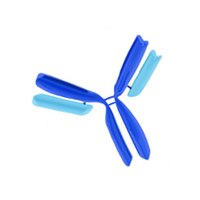OP91 Sigma-AldrichAnti-Bcl-2 (Ab-3) Mouse mAb (4D7)
Recommended Products
Overview
| Replacement Information |
|---|
Key Spec Table
| Species Reactivity | Host | Antibody Type |
|---|---|---|
| H | M | Monoclonal Antibody |
Products
| Catalogue Number | Packaging | Qty/Pack | |
|---|---|---|---|
| OP91-100UG | Plastic ampoule | 100 μg |
| Description | |
|---|---|
| Overview | This product has been discontinued. Recognizes the ~24-26 kDa Bcl-2 protein in MCF-7 cells, breast carcinoma, and lymph node tissue. |
| Catalogue Number | OP91 |
| Brand Family | Calbiochem® |
| Product Information | |
|---|---|
| Form | Liquid |
| Formulation | In 50 mM sodium phosphate buffer, 0.2% gelatin, pH 7.5. |
| Negative control | Brain tissue |
| Positive control | MCF-7 cells or breast carcinoma or lymph node tissue |
| Preservative | ≤0.1% sodium azide |
| Quality Level | MQ100 |
| Physicochemical Information |
|---|
| Dimensions |
|---|
| Materials Information |
|---|
| Toxicological Information |
|---|
| Safety Information according to GHS |
|---|
| Safety Information |
|---|
| Product Usage Statements |
|---|
| Storage and Shipping Information | |
|---|---|
| Ship Code | Blue Ice Only |
| Toxicity | Standard Handling |
| Storage | +2°C to +8°C |
| Do not freeze | Yes |
| Packaging Information |
|---|
| Transport Information |
|---|
| Supplemental Information |
|---|
| Specifications |
|---|
| Global Trade Item Number | |
|---|---|
| Catalogue Number | GTIN |
| OP91-100UG | 04055977209679 |
Documentation
Anti-Bcl-2 (Ab-3) Mouse mAb (4D7) Certificates of Analysis
| Title | Lot Number |
|---|---|
| OP91 |
References
| Reference overview |
|---|
| Larsen, C.J., et al. 1993. Nouv. Rev. Fr. Hematol. 35, 37. Kozopas, K.M., et al. 1993. Proc. Natl. Acad. Sci. USA 90, 3516. Silverman, G.A., et al. 1993 Mol. Cell. Biol. 13, 5469. Wagner, A.J., et al. 1993. Mol. Cell. Biol. 13, 2432. Vaux, D.L., 1993. Proc. Natl. Acad. Sci. USA 90, 786. Hockenberry, D.M., et al. 1991. Proc. Natl. Acad. Sci. USA 88, 6961. Reed, J.C., et al. 1991. Exp. Cell. Res. 195, 277. Reed, J.C., et al. 1990. Mol. Cell. Biol. 10, 4370. Nunez, G., et al. 1989. Proc. Natl. Acad. Sci. USA 86, 4589. |
Brochure
| Title |
|---|
| Caspases and other Apoptosis Related Tools Brochure |
Citations
| Title | |
|---|---|
|
|







